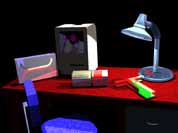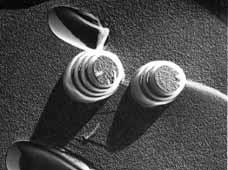 |
Bioengineering Department, Box 355061, University of Washington, Seattle, WA 98195, USA |
 |
 |
Bioengineering Department, Box 355061, University of Washington, Seattle, WA 98195, USA |
 |
This is a graduate course, the focus of which is developing an understanding of the molecular principles that underlie the self-assembly of surfactants into natural and model biomembranes--in particular on the relationship between the chemical structure of lipid molecules and the three dimensional aggregates that they form in water. This course is complementary to the Molecular Self Assembly at Interfaces course taught by Viola Vogel. Her course focuses on monolayers, whereas this course focuses on everything BUT monolayers formed by similar surfactants.
Introduction--Cellular membranes and imaging techniques
Forces Relevant to Surfactant Self-Assembly
Modeling of Forces
Natural Lipids--Nomenclature
Liquid Crystals
Lipid Phases
Lipid Motions
Phase Transitions
Liposomes--Methods of Formation and Characterization
Phospholipases
Membrane Transport
Membrane Proteins
Receptors and Transduction Mechanisms
Anhydrobiosis
Artificial Lipids
Polymerizable Lipids
Biocompatibility
Liposome Applications
Lipid Tubules and Helices--Basics and Application to Drug
Delivery
Readings:
The main text is the set of PowerPoint lecture notes by the professor. These notes are available on a class-dedicated WWW site, the address for which will be given to students on the first day of class. In addition, a requirement of the class is reading of research papers. The updated references can be found on the WWW site, and students are responsible for finding and making copies of those papers and bringing them to classes during the weeks in which they are to be discussed.
Student Participation:
Students will be expected to perform three sets of tasks during the course:
I. The first is active and informed participation in the Discussion sections. The reading material assigned during the previous class will be the topic for discussion, along with the relevant lecture materials. Failure to participate or to have read the material beforehand will result in the loss of credit.
II. Second, the research paper or papers assigned, then subsequently discussed in the Discussion section will be the topic of a 1-2 page (single spaced 12 point Times or equivalent) critique due at least 2 days after the discussion section. Points will be taken off for extra material beyond the 2 pages. These critiques are to be sent to Yager electronically as Microsoft Word files as enclosures in e-mail, and are due electronically at 5 PM on the date shown on the syllabus. Discussion among students preparing these critiques is strongly encouraged, but the actual writing of each critique must be in the student's own words. Late critiques will be graded down by 50%, and critiques more than one week overdue will not be accepted.
1. The critiques are to be short summaries of the strengths and weaknesses of the research papers in question. Include mention of the primary experimental techniques used in the research, and the context of the work with respect to other work. Briefly review at least 2 papers that you think are relevant to this one--either before or after, depending on how recent is the paper in question.
Writing must be in good formal (not colloquial) English, with attention paid to punctuation, grammar, etc. Include a formal list of the 2+ references at the end, related to in-text citations. The weighting will be the following:
|
English writing and proofreading |
|
|
Understanding of the paper(s) |
|
|
Depth of research and coverage |
|
|
Originality of ideas in interpretation |
|
III. Third, there will be a take home final examination. It is due at 5 PM on the date assigned for the final examination for the class. Discussion or collaboration of the final examination among students is not permitted.
Grading:
|
In Class Participation: 8 x (2 points) |
16 points |
|
Written Critiques: 8 x (5 points) |
40 points |
|
Final Examination: |
44 points |
|
Total |
100 points |
For more current details if you are enrolled, see the password protected WWW site.
|
Return to Yager's Syllabus Page Return to Yager's Home Page
|